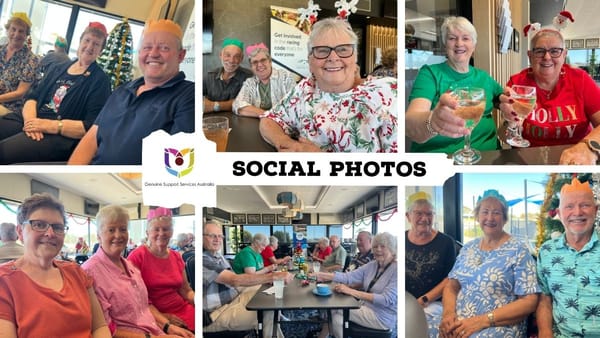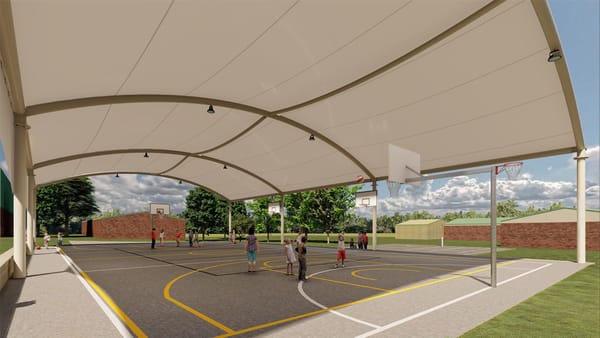Cutting benefits will push 2000 Murray Bridge residents into poverty, advocates say
A local financial counsellor and SACOSS' chief executive have issued a dire warning to the federal government.

This story was originally published behind Murray Bridge News’ paywall. Paywalled stories are unlocked four weeks after publication. Can’t wait that long? Subscribe here.

More than 2000 Murray Bridge residents will be plunged into “grinding poverty” if Centrelink payments are reduced in the coming months, two advocates say.
SA Council of Social Service chief executive Ross Womersley and local financial counsellor Janet Emmins, pictured, were speakers at a public forum on disadvantage in Murray Bridge on Tuesday night.
Doubling unemployment benefits and increasing other payments with a “coronavirus supplement” of $550 per fortnight had had a huge impact during the past six months, Mr Womersley said.
More than 2200 people in Murray Bridge would be receiving the supplement, based on Department of Social Services figures from March.
That would equate to an extra $1.2 million per fortnight flowing into the local economy.
Rather than spending the money on booze or cigarettes, Mr Womersley said, “99.9 per cent” of the job seekers he knew had used it on household essentials.
“Some people I know have, for the first time in ages, been able to go to the supermarket and feel confident about the fact they can get what they need for a week and not get to the checkout and be embarrassed about (having) not got enough money to pay,” he said.
“Some people have been able to go, finally, and get dental treatment that they’ve put off for years; other people have ... been able to take medication that has been prescribed but they've not been taking on a regular basis because they've not been able to afford to do that.
“Just being able to buy some things for their kids ... to put them into some new shoes or new clothes is incredibly liberating.”
Clawing back $300 of that $550 increase, as the federal government planned to do next month, would be “painful”, he said, and not just for recipients.
Retailers and other businesses had also benefited from the extra $70 million per week flowing into South Australia.
He encouraged everyone to join the Raise the Rate for Good campaign, which would continue to advocate for a higher rate of Jobseeker and other allowances.

Ms Emmins quoted Australian Council of Social Service figures which said only one job vacancy was available for every 13 unemployed workers.
That – not laziness – was why a majority of Jobseeker recipients had been stuck on the payment for a year or more.
“Those people don’t have a lot of skills; (entry-level jobs) are harder to get, they often are too few hours to increase their income and they’re harder to keep,” she said.
“Those people in that bracket are up against the odds.”
Ms Emmins said the people she worked with in Murray Bridge had spent their coronavirus supplements paying off electricity or council rates debts; or buying or fixing cars, which were essential in the absence of a local bus service.
She, too, urged people to support the campaign for higher government payments, or to lobby local councillors and MPs.
“We all have a voice,” she said.
“If we all stand up and say we want that rate to be raised for good, it speaks loud.”
Ian Kluge – chair of the Murray Bridge Interchurch Council, which hosted the event – argued that the Bible called on Christians to alleviate inequality.
He pointed to verses such as 1 John 3:17: “if anyone has material possessions and sees a brother or sister in need but has no pity on them, how can the love of God be in that person?”
What does it mean to be disadvantaged?
A household is commonly defined as “disadvantaged” if its income is less than 50 per cent of the median.
A disadvantaged household in Murray Bridge, then, would be one earning less than $463.50 per week.
On September 24, the Jobkeeper payment is due to be reduced by $150 per week to $431 for a single parent, $407.85 for a single person with no children or $380.40 for each member of a couple.
The payment will then be reduced by a further $125 per week, back to its pre-COVID level, on December 31.
After that, unemployed workers will be left with less than $300 per week to cover rent, food, bills, transport, health care and whatever they might need to find a new job.

How disadvantaged are people in Murray Bridge?
All parts of regional South Australia were disadvantaged to some extent, Mr Womersley said, especially when it came to education and health care.
Relative to the rest of the state, Murray Bridge residents were more likely to work in manual jobs or be unemployed, and to be less educated, earn lower incomes, live in rental properties, and lack an internet connection at home.
Ms Emmins said her clients often could not afford to pay bills, heat their homes or even buy essentials like food.
About 70 local families relied on food parcels to survive, and schools provided breakfasts and lunches to children who would otherwise go without.
But many more people opted to go without rather than seeking help, she said.
“It takes guts to present to one of these services,” she said.
“There are many people who don’t.”
- Get help: Call the Affordable SA Helpline for advice on 1800 025 539 or download the Affordable SA app; call the National Debt Line for financial counselling on 1800 007 007; or contact the Salvation Army by visiting their citadel on Fourth Street, Murray Bridge or calling 8531 1133.
- More information: povertyandinequality.acoss.org.au, raisetherate.org.au.

Photos of Janet Emmins, Ross Womersley, Ian Kluge, and the speakers with Annette Korzeba: Peri Strathearn. Video: Australian Council of Social Service/YouTube.





